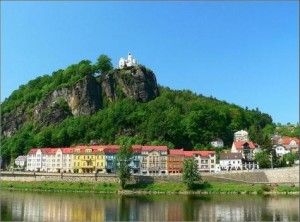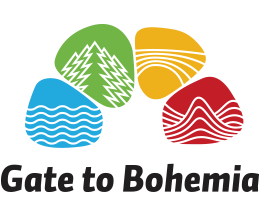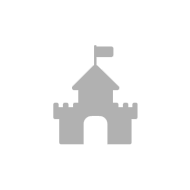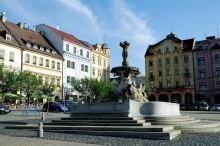The town of Děčín
Děčín is a town situated at the lowest point in the Czech Republic (135 m), at the confluence of the Elbe and Ploučnice rivers. It has a very long history dating back to the early Stone Age. A burial site from the period of the La Tène culture was found in Podmokly, one of Děčín´s town districts, thus proving the existence of a large settlement with a specific culture. The town's inhabitants were traditionally engaged in long-distance trade on the Elbe. The first town at the confluence of the Elbe and Ploučnice was founded by Ottokar II., but due to the frequent floods it had to be re-established some time later, this time in a safer place. Commerce flourished during the major development of shipping in the 19th century. This period of time signalled a general economic boom in the town (the development of textile production, later engineering), mainly thanks to the owners of Děčín Estate, the Family of Thun.
Interesting facts
The town’s dominant landmark is the Chateau standing on a ridge above the confluence of the rivers. The castle features a Baroque Pink Garden founded in the 1670s. The garden was given its name due to the fact that a rose garden was established there at the end of the 19th century. Parts of the Chateau's park with its romantic modifications have also remained preserved. A small tunnel was bored through the chateau rock and a chain footbridge was built as part of these modifications, the latter of which is now listed as a technical monument. Important monuments of ecclesiastical architecture are the Baroque Church of the Exaltation of the Holy Cross from the end of the 17th century, originally the Gothic church of St. Wenceslas; and Blažej, the Neo-Romanesque Church of St. Frantisek of Assisi. Other attractions include a Jewish Synagogue and a Renaissance stone bridge over the Ploučnice and the birthplace of Miroslav Tyrš. Another unique monument of European significance is a historical water gauge built in the rock on the side of the chateau, where the river level was recorded in the Middle Ages. Děčín is the starting point for trips to the Pastýřská (Shepherd's) Wall (on which you may find a lookout tower, a restaurant and a zoo) and further towards the Děčínský Sněžník.
Municipal theatre
The Municipal Theatre in Děčín offers professional theatre performances (drama, opera, operetta, ballet) and classical music concerts (both chamber and symphonic). The theatre and concert season usually begins in October and lasts until June.
The Municipal Theatre is the only building of this kind in Děčín and you can find it on Teplická Street. At the beginning of the 20th century, a stage for variety shows was built here. The new owner, G. F. Pilz, added another stage and a gridiron in 1918, thus extending the possibilities of using the theatre hall beyond variety shows and dance productions, to a place where films were screened and plays were performed. In the first phase of the reconstruction, the entrance area was completely rebuilt with a new architectural solution and colour of the façade. Modifications also involved the stage and significantly improving the aesthetics of the auditorium. The theatre hosted German and Czech ensembles, both dramatic and operatic. The second part of the reconstruction was completed in 1998. In 2004, the final phase was completed, the backstage was made bigger and the modern actor's dressing rooms were added.
Community house Střelnice
Střelnice was built as the headquarters of the Shooting Club. Written documentation regarding the Shooting Club in Děčín can be found from the 16th century, but the introduction of shooting fraternities date back to the 15th century. The Shooting Club united free burghers and initially had a defensive character. As time passed and the mercenary armies started to take over the defence of the town, it gradually changed into a community serving the town’s citizens.



































